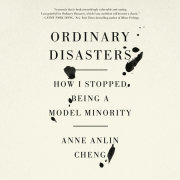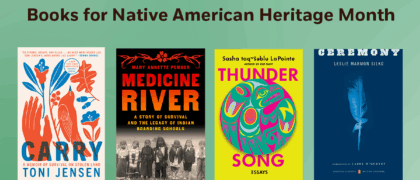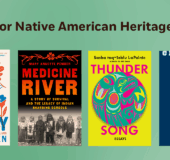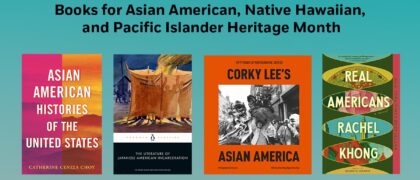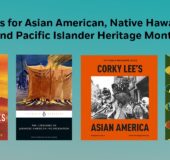When I shaved my head in anticipation of chemotherapy, two things happened. First, just like that, I stopped looking like a woman. Second, I turned into a monk. My husband, peering in the mirror, said, “Hey, you look like a cute monk!” I am pretty sure the “cute” part came out of love, but the “monk” part, echoing my thoughts, struck me as a notable coincidence. In the spirit of camaraderie, he, too, shaved his head. But he did not look less male, nor did he look like a monk. Being tall and white, he looked, well, military. So there we were: the monk and the soldier.
Given how complex gender and race are as embodied experiences, it is remarkable how simplistic and crude their visual expressions are. Could hair, a minor loss in the violence of cancer, make such a great difference? I knew, at least intellectually, that “woman” has always been reducible to her body parts, but to see such an insight so viscerally and mundanely demonstrated in the bathroom mirror stunned me. And what was with the monk? Would my husband have thought I looked like a monk had he not grown up watching kung fu movies? Would I, had I not immigrated to the United States? Have I come to see my own Chineseness through Western tropes?
In the 1990s, when I lived in Northern California, the
San Francisco Bay Guardian ran an article about the great number of relationships between Asian women and white men. The article quoted an undergraduate from the University of California, Berkeley, who, asked why she preferred dating white men over Asians, said, “Well, it kind of feels incestuous to me . . . like dating my brother.” A friend who read the article poked fun at this admission, saying, “Good thing people in Asia don’t think so!” But there’s something behind what that young woman said—a thin line of grief or maybe of querulousness, an expression of familial allergy—that has stayed with me.
Scholars have long pointed to the hypersexualization of Asian women and the demasculinization of Asian men in American popular media as a leading cause for the high rate of Asian American women marrying outside their race. But it is also common wisdom among Asian American women of my generation and younger that, if you discover your white boyfriend has been exclusively dating Asian women, you should run for the hills. Just because there is a white-male fetishization of Asian femininity does not mean that the inverse (that is, Asian-female fetishization or idealization of white masculinity) is true. In fact, for many Asian women involved in interracial relationships, myself included, white masculinity is a fraught challenge. Racialized gender, especially as it plays out in intimate relationships, is not and cannot be simply a question of identity politics or a problem of representation.
The young woman’s confession in that interview seems to me to speak more to a deeper and more silent dilemma of intimacy for the diasporic subject, a wound in the experience of kinship itself. Kinship, after all, is all about determining who is a stranger and who is not. It is generally agreed, certainly in Western cultures, that the social norm of marrying outside one’s community, clan, or tribe produces biological, economic, and cultural advantages. (Anthropologists call this
exogamy.) The injunction to marry outside one’s bloodline to ensure genetic diversity and create social alliances, however, takes on different and confusing meanings when your clan or community has been truncated or displaced, at once insular and under assault.
For many immigrant communities, marriage within one’s ethnic group (
endogamy) ensures cultural and familial continuity in the face of fragmenting, geographic dispersal. Here, then, is the double bind for the racialized minority: marrying out means selling out, while marrying in can feel like giving in to conservative familial demands on the one hand and xenophobic prohibition on the other. Only within the peculiarities of American racial dynamics can traditional, racist white anxiety about miscegenation find a ready ally with traditional Asian family values. Both sides apply patriarchal and racial restrictions within which the Asian American woman must navigate.
Love can be challenging. Add being Asian and a woman in America, and you get a vexing picture. As Cathy Park Hong sums it up in
Minor Feelings, “In the popular imagination, Asian Americans inhabit a vague purgatorial status . . . distrusted by African Americans, ignored by whites, unless we’re being used by whites to keep the black man down.” Used as pawns in the game of racial divisiveness, Asian Americans are often despised for their reputed adjacency to whiteness and economic privileges. In a 2012 study, the psychologist Susan Fiske showed that most Americans rate Asians and Asian Americans as highly “competent” or “intelligent,” but almost all found the latter to be “cold” or “not warm”—that is, unloved and unlovable. The result is not surprising, especially since the very terms of the survey (“competence” and “likability”) already scripted the yardstick against which Asianness gets judged.
The Asian American woman would seem to fare better than her male counterpart on the likability scale. She at least can claim access to the idea of erotic or exotic appeal. But this privilege also spells her downfall. At once the lotus blossom and the dragon lady, the celestial being and the pestilential prostitute (according to nineteenth-century immigration laws), Asian beauty in America is, historically and now, an ugly business. To this day, the Asian American woman occupies a weird place in the American racial imaginary: she has absorbed centuries of the most blatant racist and sexist projections, yet she hardly registers in the public consciousness as a minority, much less a figure who has suffered discrimination.
The writer David Xu Borgonjon once wryly observed, “You can only be Asian outside of Asia.” For the Asian American woman, I would add, she can be neither wholly Asian nor wholly American. Seen as both a prize and a liability, she is caught between sets of double elimination that make the question of love—and the stranger-versus-family distinction—confounding, even perilous.
Copyright © 2024 by Anne Anlin Cheng. All rights reserved. No part of this excerpt may be reproduced or reprinted without permission in writing from the publisher.




